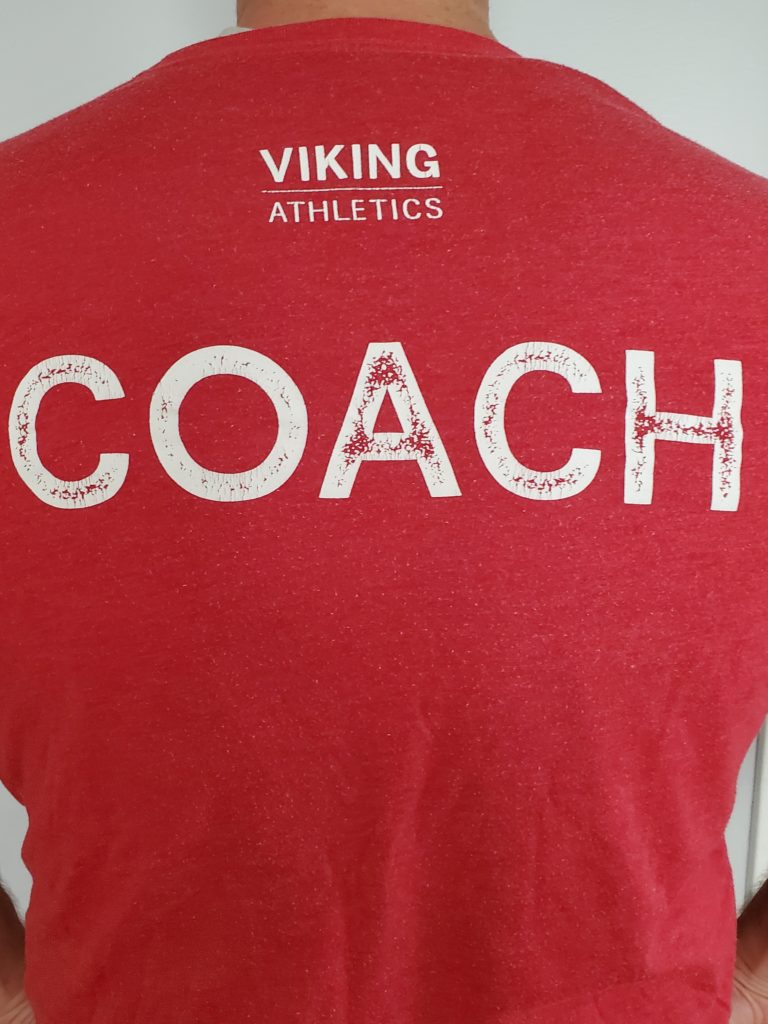The fitness space is filled with Instagram “Fitpros,” supplement/diet salesmen, and other “quick fix” schemes designed to take your money and give you no results, so that you move on to the next shiny item/service/program to buy, and on and on the cycle repeats. It can be difficult to navigate through the noise and find what will actually benefit you. Enter coaches – it is a coach’s job to help guide you through that noise, so that you can accomplish your goals.
What is the difference between a trainer and a coach? A trainer is simply a class facilitator. “This is what we’re doing today, go do it.” Feedback on form is not a requirement. Furthermore, a trainer’s contact with clients ends at the door of the gym. In a world of fitness hobbyists and fitness professionals, trainers skew towards the hobbyist side of things. A coach is a professional. As I said above, the coach’s job is to help you find your path to achieve your goals, rather than simply contributing to the white noise that can distract you. Coaches build relationships with clients, and explain WHY you’re doing what you’re doing, and how it’s going to benefit you.

At Viking Athletics, we have a team of coaches. This title is earned through hard work and continued study. Fitness organizations like CrossFit and USA Weightlifting have lowered the barrier of entry to the coaching profession – you pay money, attend a weekend certification, and BOOM! You’re a certified trainer and are now insurable. As I said in our June podcast, this is just a starting point (albeit a necessary one), and does not make a coach. So, what does it take to become a coach? It requires both hard skills, and soft skills.
Hard Skills:
Programming knowledge – Random workouts get random results. A well-designed program allows clients to continuously progress over time, while minimizing the risk of injury. A coach must understand how each workout fits in the bigger picture, and how to write a program to help clients achieve their goals.
Proper movement selection – there are SOOOOOO MANY movements and ways to vary them. Take the bench press for example. We have the standard bench press, pause bench press, 1 and ¼ bench press, and tempo bench press. Then we can vary the grip and do close grip, normal grip, and wide grip, and once again add pauses and tempos. Then we can bands or chains for accommodating resistance for all grip and tempo variations. We haven’t even gotten into using incline variations, or Spoto press, or floor press, or subbing in DBs or specialty bars. That’s just 1 basic movement, and already we have numerous variations. It’s important to understand what each one does so you can pick the right tool for the right job.
Coaching Eye – this is a coach’s ability to properly assess a client’s movements. What flaws need correction, and how can we fix them? A coach can’t help you improve and stay injury free without it.
Ability to progress and regress movement patterns – in CrossFit jargon, this is scaling. It’s not all about using lighter weights. When movement flaws are due to mobility, or when we’re using an advanced gymnastics movement that not everyone can do, we keep the pattern the same, but go to an easier variation. For example, a jumping muscle-up instead of a regular one, or a hang power snatch instead of a full snatch. It should go without saying that technical knowledge of movement points of performance is a prerequisite for this.
Soft Skills:
Communication – A coach with all the technical knowledge in the world will not be able to help anyone if they cannot explain movements in a way that clients can understand.
Empathy – A coach needs to be able to relate to their clients. Life happens, circumstances change. Training can and should be adapted to accommodate this. Furthermore, no one cares how much you know until they know how much you care.
Growth Mindset – training is a process, we don’t expect perfection, ever. We recognize that everyone can always improve – you’re not stuck at your current ability. Take the long view – focus on improving one thing at a time.
Methodology Agnosticism – We all favor certain movements and methods of exercise. At Viking Athletics, we offer personal training, CrossFit, powerlifting, and weightlifting. None is better than any other, it’s a matter of goals and interest. We can’t program for or coach others the way we like to be coached or programmed for. It’s not about the coach, it’s about the client. This is why many high level athletes struggle to make the transition from athlete to coach; they can’t separate themselves from the process and focus on the client. (See also, Larry Bird vs. Magic Johnson as coaches.)
We could dive much deeper into each of these skills. The bottom line is that a great coach needs all of them. The hard skills can be built with study and practice. The soft skills take time to learn. A weekend certification is the start of the coaching journey, not the end all be all. And certifications do not make a coach. We pride ourselves on being professionals, rather than hobbyists here at Viking Athletics. That is what you pay for, and that is what is going to get you the best results. For this reason, anyone interested in becoming a coach is required to complete a 6-month internship in addition to earning an insured certification, so they can build the hard and soft skills necessary to truly help our members. The internship is not easy; it’s complete with classroom sessions, books to read, and an accumulation of hours shadowing a current coach. Are you interested? We’re always willing to help people become coaches. Reach out to Coach Erik at erik@vikingathletics.net.
